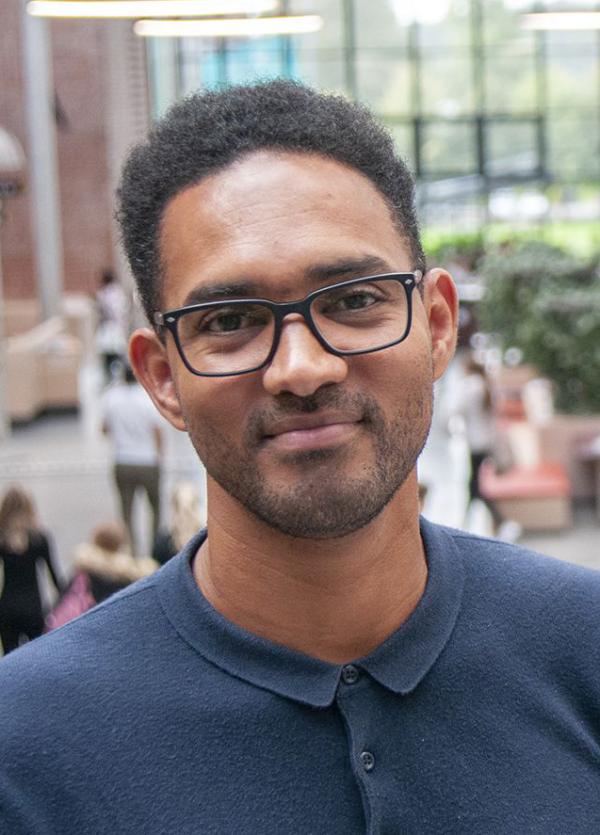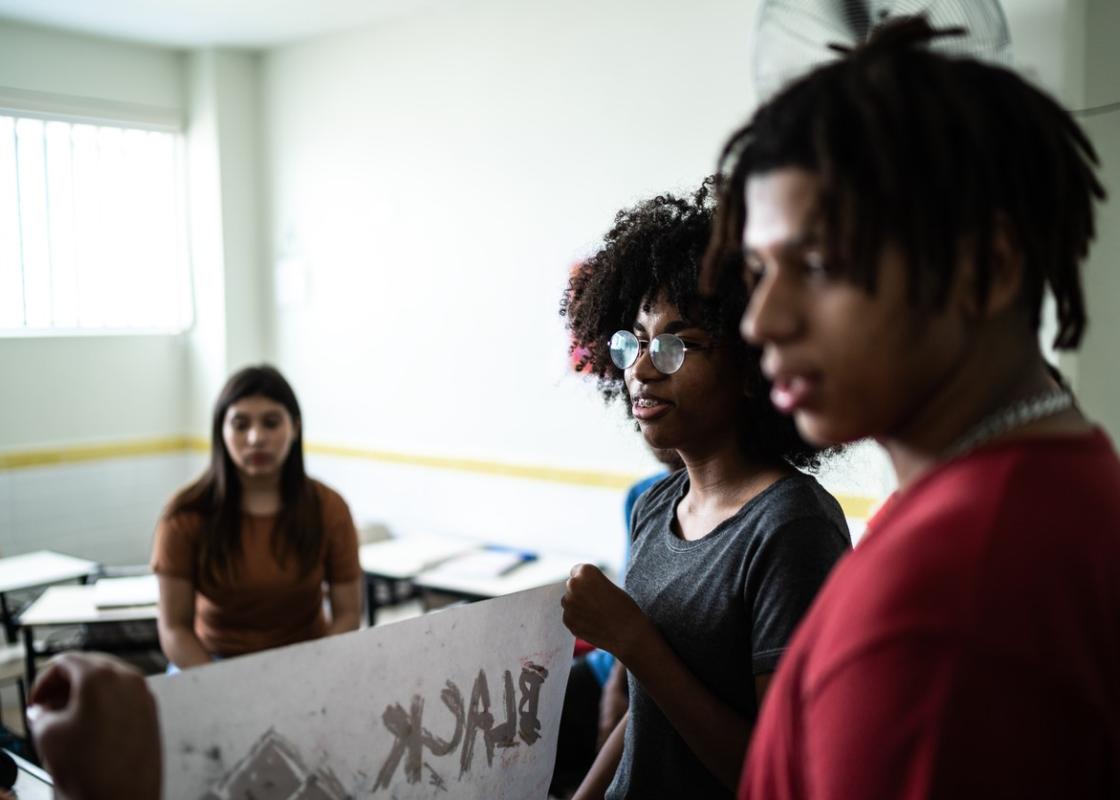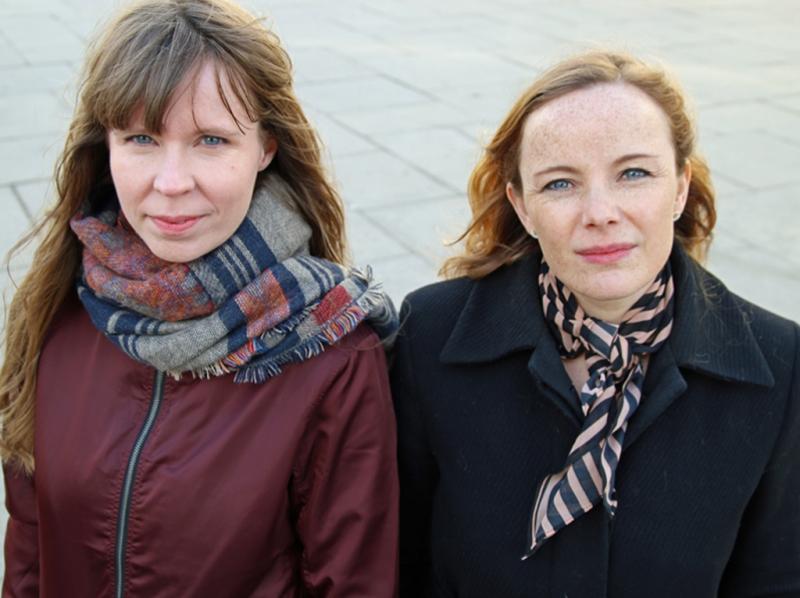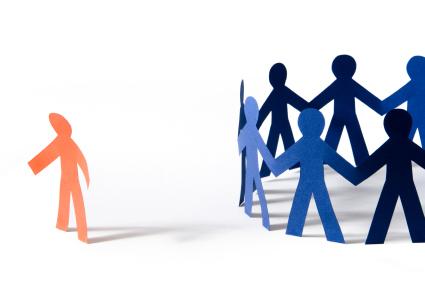“The idea for the book came after the Black Lives Matter movement reached Norway and entered the public debate in the spring of 2020,” says Cora Alexa Døving, researcher at the Norwegian Center for Holocaust and Minority Studies in Oslo.
“The general public could access personal accounts from the state of affairs in Norway, allowing us to talk about racism in a whole new way.”
At that time, a debate arose about the extent to which linguistic terms that evolved in countries like the United States and England were useful for understanding racism in a Norwegian context, she says.
“It’s something I wanted to ask different researchers about – have terms such as critical race theory, structural racism and white privilege meant something to you as a researcher? I also wanted to find out what research overall could tell us about racism in Norway.”
Cora Alexa Døving is an historian of religion and senior researcher at the Norwegian Center for Holocaust and Minority Studies (Holocaust Centre), and has researched different aspects of minority and majority relations for a number of years.
She is the editor of the anthology Rasisme – Fenomener, forskningen, erfaringene (Racism – the phenomena, the research, the experiences) that was published in autumn 2022. The book has contributions from twenty-five researchers working in different disciplines.
It's important to talk about racism
Døving imagined it would be “a small piece” that would be published quickly, but that was not the case. The book that lies on the table between us comprises three parts and over 450 pages.

Part one deals with international perspectives in Norwegian research, part two deals with the complexity of racism, and part three deals with everyday racism.
“The first two parts of the book are mostly aimed at students, while the third part is hopefully of general interest,” she says.
Døving wrote the book Hva er rasisme (What is racism) with Sindre Bangstad but would not identify herself as a “researcher of racism.”
“In recent years, I’ve primarily researched antisemitism and islamophobia. At the same time, I’ve participated in many public discussions on the subject and have encountered strong criticism whenever I’ve used the word racism,” she says.
Døving noticed a distinct change after the spring of 2020.
“People began to realise that racism was a phenomenon we needed to address, even in Norway.”
According to Døving, there are several reasons why it has been so difficult to talk about racism in Norway.
“It's hard to talk about racism in a country such as Norway, that sees itself as so homogeneous. We have generally been very unwilling to confront our own racist history, such as the Norwegianisation of the Sami people and the Norwegian and Swedish travellers,” she says.
“Another reason is that historically most people have seen racism in Norway as a phenomenon linked to neo-Nazism and far-right groups.”
Some researchers have perhaps been worried about reproducing ideas about racism.
Døving believes there is a general lack of discussion about how racism manifests itself, and the way it is experienced.
“For example, racism has either been described as an ideology or as a consequence of poor integration, which in turn leads to discrimination,” she says.
“There has been a lack of awareness that racism – also in Norway – is related to people's appearance, such as their skin colour, eye shape or other facial features.”
Døving points out that when migrant workers who came to Norway in the 1970s experienced racism, many considered it to be the immigrants' own fault.
“It was explained by saying they were not properly integrated,” she says.
“But as it became apparent that people adopted from Asia and Africa were also experiencing racism, poor integration could no longer be blamed.”
Racism linked to race
Many researchers have also been reluctant to work with racism because of the associations with racial research that was happening before the war, which linked racism with apartheid and Nazism,” says Døving.
“Some researchers have perhaps been worried about reproducing ideas about racism. There is also very little research on the significance of skin colour at Norwegian institutions.”
According to Døving, the ideal of colour blindness has remained firm in Norway.
“The intention behind it may be good. However, it likely means we reflect less on the fact we do see skin colour, and that can be related to certain associations and prejudices. In many cases, this leaves us oblivious to our own racist comments and actions,” she says.
“I have noticed that more and more people are using the term visible minorities. I think that's a good term that can replace skin colour and race, and be useful in the discourse on racism.
Norway vs USA
“Why has it been so much easier to talk about race in the United States?”
“In the United States, the concept of race has been scientifically defined as a social construct rather than as a biological difference,” Døving explains.
“In Nazi-occupied countries, the race concept was buried after World War II because of its associations with the Nazis' idea of the superhuman.”
Døving believes that, in one way or another, all racism is about exclusion and ordering people into hierarchies. But not necessarily in terms of race. And it’s not always intentional.
We need to concentrate on the consequences racism has on those subjected to it.
“A single casual remark has not been seen as racism because it is not rooted in a deep-seated personal belief that some races are better than others,” she elaborates.
“That being said, we now know from experience that remarks from people who are not racist in an ideological sense, may be both experienced and defined as racism.”
Not very systematic
Ronald Mayora Synnes is an associate professor at the Department of Sociology and Social Work at the University of Agder. He is also a member of Kilden's Advisory Board and the Committee for Gender Balance and Diversity in Research (KIF Committee).

“Within the field of sociology, racism has been studied in Norway since the 1990s, but only sporadically and unsystematically,” says Ronald Mayora Synnes.
“Even though a great deal of research has been done on immigration and integration into the world of working life, very few researchers in this field have looked at this with racism as a perspective.”
Synnes believes that researchers tend to research what they themselves have experience with and have an interest for.
“The lack of research with racism as a perspective may be the result of there being few researchers in Norway from minority backgrounds. Although we are seeing fortunate signs of improvement, the subject of racism is still not a priority for Norwegian funding institutions.”
“In addition, racism is a controversial topic,” says Synnes.
“This is especially true in countries such as Norway, where there is a common conception that we live in a society that isn’t racist,” he says.
“For instance, racism is not even used as a perspective in the research into the Norwegianisation process against the Sami people.”
Synnes believes it is time to shift attention away from those who practice racism, to those who know racism from personal experience.
“We need to concentrate on the consequences racism has on those subjected to it. What is perceived as racism and how does it affect those who experience it?”
Racism is gendered
Men and women experience different forms of racism.
“Boys and men are more often subjected to abuse and being treated as primitive. For example, they get compared to animals and have animal sounds shouted at them,” says the editor Cora Alexa Døving.
“Girls and women are more likely than men to encounter contempt because of their physical appearance. Many experience being called dirty and ugly as children, while as adults they experience sexualised racism. In addition, many women with East Asian appearance have been met with stereotypes that define them as passive and subservient.”
The book does not have an overarching gender perspective, but some of the authors have used gender perspectives in their contributions.
“The gender perspective is useful when researching racism. For one thing, it makes clear that gender and racism work in tandem with other factors and exist at multiple levels in society,” says Døving.
In connection with the exhibition “IN/VISIBLE - Everyday Racism in Norway", she and colleagues at the Holocaust museum interviewed fifty people with different minority backgrounds, from different places in Norway.
“One experience that we heard again and again was that women who wear hijabs experienced being perceived as less knowledgeable, because many assume they must be subservient and oppressed.”
Another pattern reflected in the research material, is that many people who experience racism, let it pass in silence. The reasons they give for this surprises Døving.
“When they experience racism, there seems to be a deliberate strategy not to reprimand or confront those who are behind the act,” she says.
“They don't want to turn themselves into victims and they want to be polite.”
A longer version of this article was first published in Norwegian, and was translated by Allegro language services.


